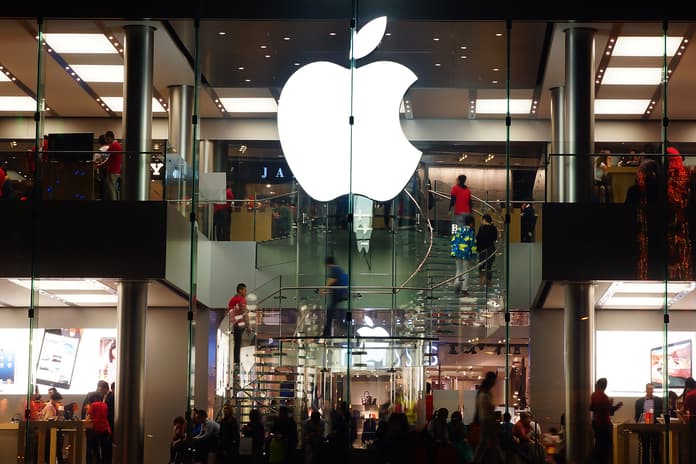In a market that appears to be emerging from the 2022 tech carnage (leading many investors and traders to speculate that this shiny new bull market has legs), Apple (NASDAQ:AAPL) investors could be forgiven for looking at other companies and wondering what all the fuss has been about with rising interest rates foretelling the doom of big tech – after all, Apple stock has fared extremely well compared to its mega-cap brethren.
Looking back from the beginning of 2022 to the present, Apple has clearly outperformed Meta Platforms (NASDAQ:META), Google (NASDAQ:GOOGL), and Amazon (NASDAQ:AMZN), being the only business to post a positive return over the timeframe. Apple has increased by more than 40% in 2023 alone.
Of course, the question is whether the good times can last. Let’s get started.
Is the Past a Prelude?
We initially discussed Apple in January of this year, stating that the stock’s performance in 2022 constituted an intriguing opportunity to buy. The stock has increased by 35% since then.
Before we get started, let’s take a look at Apple’s present valuation and revenue potential. As expected, projected valuation indicators demonstrate that the stock’s relative value has climbed in tandem with its price.
Apple’s forward price-to-earnings [PE] ratio has climbed from close to 20x in 2023 to 29.6x now. EV/EBITDA has also increased, from roughly 15x to 22.9x. Interestingly, while these values have climbed in 2023, the growth has largely been a return to familiar valuation areas for the stock since it peaked in 2020.
Revenue projections for the next four years are good, but not spectacular. Earnings forecasts for the coming year have fallen from their predicted high, but analysts anticipate that earnings will be essentially flat over the next few years (i.e., expectations have not been revised upwards).
Of course, we’re talking about Apple, and ‘flat’ to this corporation is $478 billion in revenue in four years.
Looking ahead, Apple’s second-quarter results were largely unsurprising, with top-line revenue down about 3% year on year (though the company did reveal a nice bright spot of growth within India), but whatever earnings were reported were largely overshadowed by the launch announcement of Apple’s long-awaited virtual reality headset, the Vision Pro, which will be available for purchase in early 2024.
Predictably, Apple has priced the headset significantly above its competitors, at $3,400 vs competitors’ sub-$1,000 headsets (Facebook’s Meta Quest 3 costs $499). However, early evaluations indicate that Apple’s headset offering is significantly superior in terms of quality and experience than its competitors.
Of course, it’s tempting to believe that the market for Apple’s costly virtual reality headset will be considerably smaller than predicted, or that it would fail to engage with customers meaningfully. After all, most customers (and investors) have come to expect headsets and virtual-slash-augmented reality gadgets and services to fall short of expectations in recent years – remember the Metaverse and Google Glass?
A somewhat longer perspective, on the other hand, will remind us that Apple has already defied expectations of failure by successfully breaking into (or creating) new markets that were previously supposed to be inaccessible. After all, the Apple Watch and iPad were also met with trepidation upon their initial release.
However, we argue that the decision is not binary. While we do not expect the Vision Pro to meaningfully disrupt Apple’s smartphone business anytime soon, we do believe that the headset will have a material influence over time as customers find the benefits of connecting the headset with Apple’s rich ecosystem. Worst case scenario, we feel that the headset’s arrival means that Apple will not be left behind in the AR/VR race. In the best-case scenario, according to a recent Barron’s story, Evercore ISI analysts predict the headgear may produce up to $10 billion in revenue for Apple over the next five years.
Prudent Administration
Of course, Apple has more to offer than a new product launch. The company is well-run, and the most recent earnings revealed some under-the-hood hints for investors that little has changed within Apple’s circular walls in Cupertino.
To begin, the corporation continued to buy back shares. According to Apple’s CFO, “we returned over $23 billion to shareholders, including $3.7 billion in dividends and equivalents and $19.1 billion through open market repurchases of $129 million Apple shares.”
Apple also looks to be restocking its inventory strategically, as shown by a considerable rise in carrying component inventory.
The corporation added over $2 billion to its component stockpile. Most firms would see a stockpile of this magnitude as a possible danger flag, but Apple management appears to be taking advantage of what is likely to be a short-term reduction in component pricing.
In this regard, CFO Luca Maestri stated on the conference call that “[t]he environment on the component side is favorable,” and that the company expected this to continue into the third quarter.
Statements (and actions) like this should be music to the ears of investors, demonstrating that management remains vigilant and makes opportune movements whenever they present themselves.
What About Apple Stock?
While Apple stock is still more costly per share and in terms of valuation than it was at the outset of the year, we feel there are plenty of reasons to anticipate the firm will continue to perform well. We believe that the primary risks to Apple are external in the form of deteriorating economic conditions or geopolitical risk in the form of the company’s exposure to China for its supply chain operations.
However, we believe that the company may still have potential to grow and that its prospects remain promising.
Image: Megapixl_Plotnikov

















